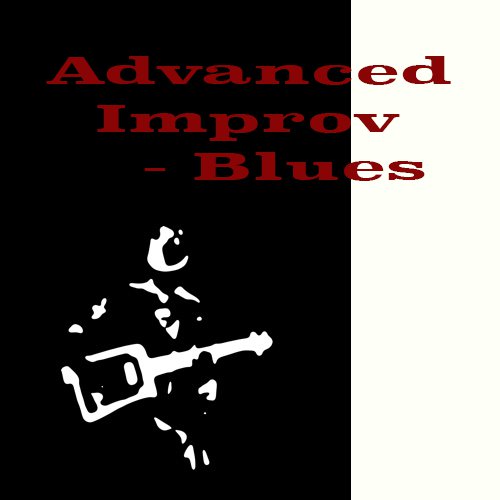
The End Game. The Advanced Improvisation courses represent the end goal of all your studies here. And because there's no limit to what you can learn there's no limit to these courses either. For now it's about the blues but there's always more to learn and there'll be more to add. Starting with the blues makes sense because at it's heart it's a music for improvisation. The skills and confidence that you gain here will transfer into other areas of your learning as well.
This course covers the essentials of improvisation, including all of the essential theory, musicianship skills and stylistic elements that you'll need to improvise the blues. You'll learn when to apply major and minor scales and how to combine them, you'll learn to navigate your fretboard with ease and you'll be able to translate the cool sounds in your head into music that the rest of us can hear.
Part 1 is complete, the outline is below. In Part 2 you'll learn to play in other styles by enriching your knowledge of tonal harmony and navigating the fretboard in different keys, best to get the blues under your belt first eh?
Lesson1 | Tonality |
| Improvisation is essentially composing new music on the fly. To do that you need to understand what tonality is, how key centres work, why melodies are shaped the way they are. This lesson introduces you to these essential concepts and shows you how to transfer simple blues licks across different tonal spaces. | |
Lesson2 | Scales |
| Before launching into learning your scales you should know why they exist, what they are good for, and when not to use them. You don't want to play up and down a stack of fancy scales like a robot, you want to improvise so you need to know how your scales relate to the concept of tonality | |
Lesson3 | Vocalising |
| The first step in being able to play what you hear in your head is being able to vocalise the notes you want. You want your playing musical, not mechanical. Learning to hear the pitch of a note in your head and then vocalise it refines your musicianship. Eventually you want to find any note on your guitar tand now you can start doing that. | |
Lesson4 | Tension and Release |
| Learn how to create tension and release using the tonal concepts that you've already covered. Here is where you start to create your own musical ideas, you're not just copying riffs from someone else. You know how tonality works, you have a solid technique in vocalising that will help you make original music and you have an instrument tailor made for playing the blues. | |
Lesson5 | The Minor Pentatonic Scale |
| Learn, or perhaps revisit the minor pentatonic scale in context of what you know about tonality and tension and release. It also gives you a whole lot more scope to apply the techniques covered up until now. | |
Lesson6 | The Major Pentatonic Scale |
| The major pentatonic scale gives you a whole new sound and whole new scope for your improvisations. First though iIn this lesson you will familiarise yourself with the scale and spend some time learning your fretboard. | |
Lesson7 | The Blues Scale |
| You're not really another scale, more an extension of the minor tonality you've been using. It does however add an important element to your blues. You're choosing every note for effect now, not just playing up and down scales all day. | |
Lesson8 | The Major Tonality |
| Now that you know your scales, are familiar with your fretboard and have some techniques to help you improvise you can start to bring it all into the context of a 12 bar blues. You'll learn when to play what scale and why and how to combine them. | |
Lesson9 | The Minor Tonality |
| The minor tonality is a whole different sound with many different applications. Here you'll learn how to use it to create maximum tension in your soloing | |
Lesson10 | Playing over the V chord |
| It's important that your soloing recognises the chord changes in the blues. Playing over the V chord requires another different set of choices to be made, you best know what they are. | |
Lesson11 | Wrapping it up |
| Finally you'll have two opportunities to look at how all of these concepts are brought together in two different styles of blues soloing, one major and one minor. There's also a 12 bar solo with fuill analysis in your notes that you can learn to play and apply all of the concepts that you've covered up until now. |
